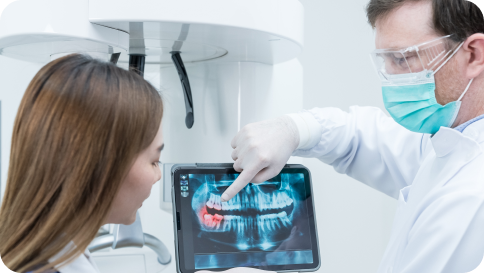
Advancements in digital dentistry have revolutionized the field of dentistry itself, especially when it comes to restorative procedures. Among the various applications of digital dentistry, one area that stands out is supra-gingival restorative dentistry. This innovative approach not only offers superior patient outcomes but also holds significant implications for dental education.
Understanding Supra-Gingival Restorative Dentistry
Supra-gingival restorative dentistry involves performing restorative procedures above the gum line, avoiding any invasion of the subgingival area. Traditionally, dentists had to work below the gum line, making the restorative process more challenging and time-consuming. With the advent of digital dentistry, the use of intraoral scanners, computer-aided design and manufacturing (CAD/CAM) technology, and 3D printing has transformed the way dental restorations are designed and fabricated.
Innovations in Digital Dentistry
The integration of digital technologies in supra-gingival restorative dentistry has led to several key innovations:
- Intraoral Scanning: Instead of using messy impression materials, dentists can now use intraoral scanners to create highly accurate 3D digital impressions of the patient’s teeth and surrounding structures.
- CAD/CAM Technology: Computer-aided design and manufacturing systems enable dentists to design precise and customized restorations digitally. This streamlines the process, reduces human errors and ensures a better fit overall for the final restoration.
- 3D Printing: With the help of 3D printers, dental laboratories can fabricate restorations quickly and efficiently, reducing turnaround times and enhancing patient satisfaction.
Implications for Education
The integration of digital dentistry in supra-gingival restorative procedures has several implications for dental education:
1-Continuing Education: Dr. Jose-Luis Ruiz provides continuing education courses in supra-gingival, minimally invasive dentistry in Studio City, California, including training on digital technologies. It is vital for established dentists to pursue continuing education programs to learn about the latest advancements in digital dentistry. Lifelong learning is crucial to ensure dental professionals remain competent and confident in using these technologies.
2-Improved Patient Outcomes: Educating dental students and practitioners on supra-gingival restorative dentistry and digital tools can ultimately lead to improved patient outcomes. Minimally invasive procedures result in less postoperative discomfort, better preservation of tooth structure, and reduced risk of complications.
3-Enhanced Efficiency: Integrating digital dentistry into the curriculum can streamline dental workflows, making them more efficient and time-effective. Students should learn how to harness the full potential of digital tools to maximize productivity in their practice.
4-Patient-Centered Approach: Digital dentistry encourages a patient-centered approach, as it allows dentists to involve patients in the design process and consider their preferences. Our curriculum emphasizes the importance of communication and shared decision-making to achieve optimal outcomes.
Call To Learn More!
Advancements in digital dentistry have brought about significant improvements in patient care. By preparing the next generation of dentists with these invaluable skills, we can ensure a brighter future for dental care with improved patient outcomes and enhanced efficiency in dental practices. At Los Angeles Institute of Clinical Dentistry & Ruiz Dental Seminars Inc., we invite you to reach out at 818-729-9121 to learn more about our continuing education courses. Call or register soon!

